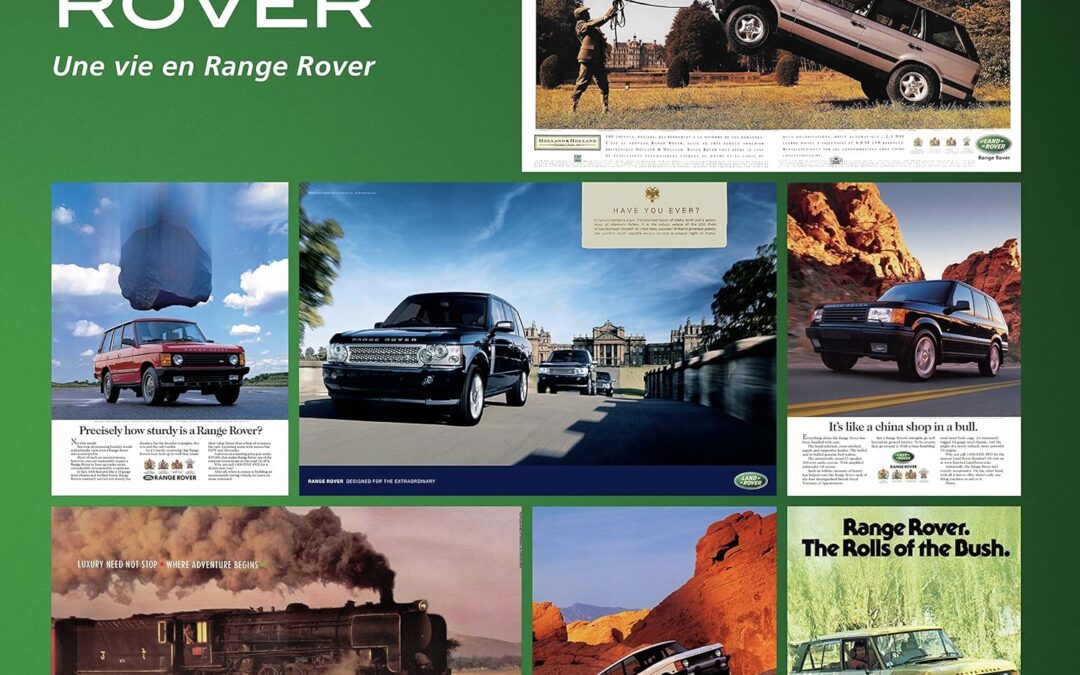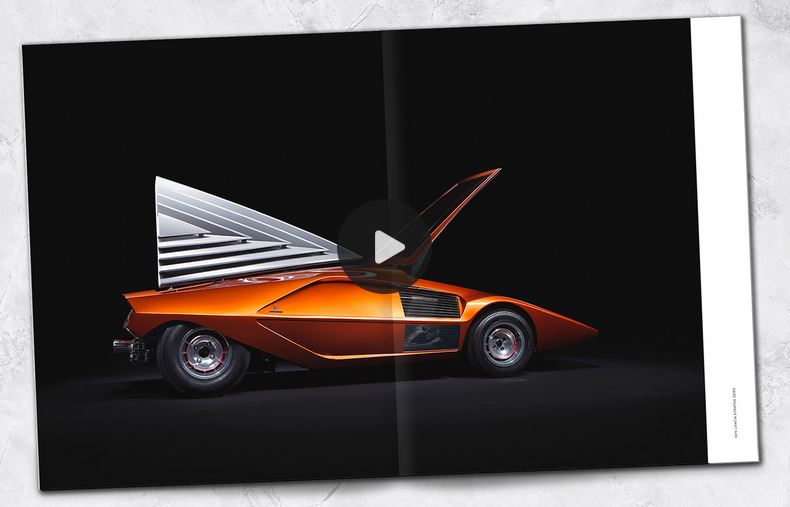
- A stunning coffee table book of historically significant NASA photos
- Amazing photographs complemented by quotes and stories from noted personalities at NASA
- A chronological journey through NASA’s history, from Apollo to the James Webb Telescope
- Awe-inspiring, inspirational and motivational, a perfect gift and a must for your library
- Quotes from astronauts Commander James Lovell and John Glenn, as well as John F Kennedy, Ralph Waldo Emerson and many more
“The history of space exploration is best presented in this book of NASA photographs, whose images are universally inspirational.” – Commander James Lovell, Apollo 13
NASA has worked at the forefront of space exploration and research since 1958. Their devotion to furthering our understanding of what lies beyond our atmosphere has seen 12 humans walk on the surface of the moon, helped form the International Space Station, and placed numerous rovers on Mars. Voyager 1, launched by NASA on 5 September 1977, is the furthest manmade object from earth, having left our solar system entirely – and the agency’s plans for the future are equally inspiring.
This book celebrates NASA throughout the years, from its inception to its 60th anniversary in 2018, and beyond. A visual tour-de-force, the book collects high resolution NASA photos of historic significance; from rarely seen photos and the words of President John F. Kennedy commanding the space race, to the many triumphs and tragedies of the Apollo Missions, moon landings, the International Space Station, space shuttles, journeys to Mars and explorations of our galaxy’s outer reaches. These breathtaking images are complemented by heartfelt words of hopes and imagination for the future, encouraging readers to admire their world from a different perspective. NASA: the Greatest Milestones is a stunning 300 page book.

Old campers have an appeal that reaches back in time and can send your imagination soaring. Let’s face it: they are cool. Who hasn’t seen one parked on a boulevard with a “for sale” sign and pictured it bouncing along behind the family car, ready for adventure and fun?
Unfortunately, campers are not quite homes, they are not quite cars, and they have their own unique systems and demands that make fixing and upgrading a challenge. Even if you have plenty of DIY experience, a camper speaks a foreign language. Consider Camper Rehab your Rosetta Stone for the language of Shasta, Dutchmen, or Airstream.
This book is a top-to-bottom guide to getting a fifth-wheel, teardrop, or other camper trailer ready for the road and beyond. From basic troubleshooting to electrical and plumbing projects, replacing interior surfaces, and clever (sometimes “retro”) decorating ideas, this book uses detailed illustrations, color photography, and a wealth of step-by-step, how-to information to get help you get your travel trailer into shape for your next big–or little–adventure.
And in case you haven’t pulled the trigger on that trailer you’re eying on Craigslist just yet, Camper Rehab also walks you through the process of evaluating a potential purchase, identifying which issues are fixable and which are dealbreakers, as well as how to spot hidden problems. Written by accomplished DIY author Chris Peterson, whose light and approachable tone is coupled with the hardworking DIY information you need, Camper Rehab is a must-have for any camper owner or dreamer.
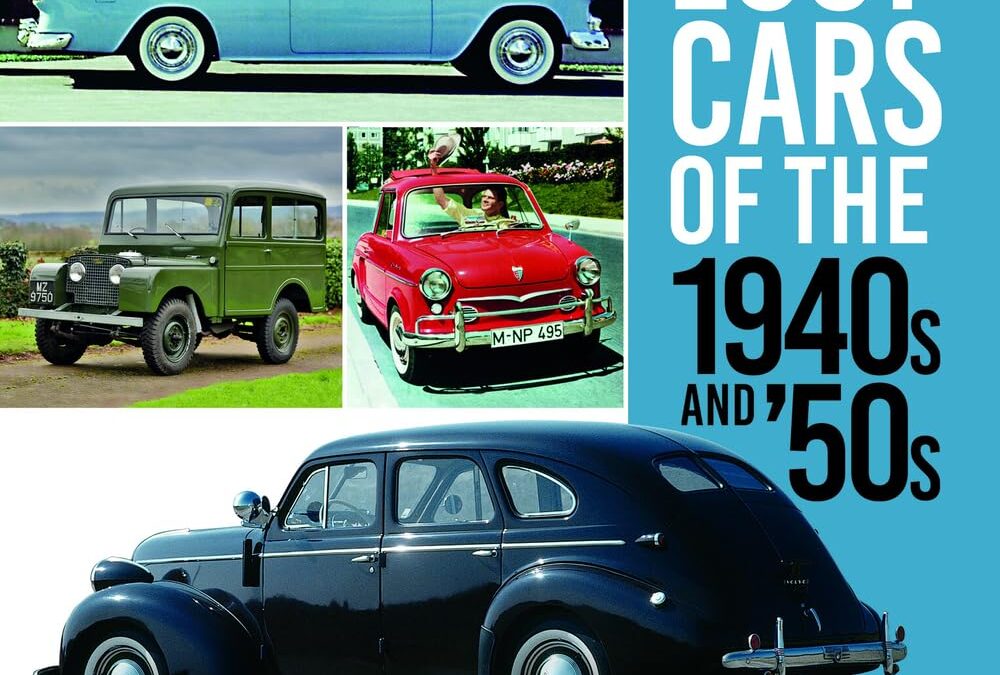
Sixty diverse cars, sixty fascinating stories, sixty contrasting specifications, but just one uniting factor: they’re all forgotten, neglected or misunderstood classics. In this engaging new book, these casualties and sideshows of motoring history from around the world finally get the recognition they deserve. Revisit daring new designs, interesting new economy cars, affordable sports cars, and some extraordinary luxury cars, from post-war austerity to the you’ve-never-had-it-so-good era, during which these elusive machines briefly shone. It was a time when engines gained more power, suspension became more cosseting, the chassis frame became a thing of the past, and styling followed jet fighters and space rockets. Giles Chapman, award-winning author of Lost Cars of the 1970s, has gathered together an all-new selection of intriguing strays of the car world, superbly illustrated with rarely-seen archive and contemporary images that bring all these cars back to life… even if they misfire once again in the process!
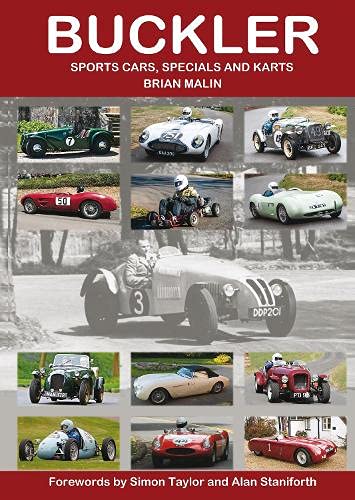
Although they were born 18 years apart, Derek Buckler and Colin Chapman were contemporaries when it came to designing and building ground-breaking sports cars in the late 1940s and early ’50s. They had much in common. Both were innovators, especially in areas of chassis design and improving the handling characteristics of their cars. Both founded successful companies and both died relatively young, Chapman in December, 1982, at the age of 54, and Buckler in 1964 at just 53 years of age. Yet, while Chapman’s Lotus went on to achieve worldwide fame, the name Buckler remains comparatively little known.
Special building was popular in the 1950s, mostly using ‘donor’ chassis from Austin 7 or Ford or simple ‘ladder’ frames but Buckler offered a multi-tubular space frame which was both stronger and lighter and, moreover, available in different models to suit different applications. He was also always ready to adapt his products to his customers’ requirements. In all of this, Buckler’s aim was to provide the impecunious enthusiast with a versatile sporting vehicle which could be used as daily transport during the week and, at weekends, in a wide range of motor sporting events from trials and driving tests to out and out racing. Often, however, the resulting Special would carry a name that concealed the Buckler contribution and a major part of the significance of Malin’s book and the vast amount of painstaking research put into it by its author is that much of that contribution is now revealed.
Buckler also, of course, made a range of complete cars starting with the versatile Mk5 and 6 and going on to encompass DD1 and DD2 with De Dion rear ends and the BB100 with backbone chassis introduced considerably before Lotus’s Elan and their other similarly based models. When karting became popular in the early 1960s, Buckler’s space frame technology found another application for which it was ideal and it became a major player in this burgeoning branch of motor sport. Buckler was also successful with its range of accessories including engine and transmission components and most notably its much admired close-ratio gears.
Brian Malin, the author, first owned a Buckler car in the 1970s and today competes in his Mk 5 in hill climbs and other events. He is an active member of the Buckler Register as well as the British Historic Kart Club and is often to be seen racing or demonstrating his Buckler kart so he is well placed to compile this comprehensive history of all things Buckler. It was first made available in loose-leaf form as long ago as 1990 but this is its first publication as a fully-fledged book, revised, updated and with additional material. Chassis design guru – and Buckler owner – the late Alan Staniforth provided the original foreword and this has been updated and included along with a new foreword by commentator and doyen of motor sport journalists, Simon Taylor.
The fourteen chapters begin with ‘Buckler and the Company’, cover the production and racing cars with some individual histories, the Buckler accessories including one chapter on the badges alone, overseas distribution – New Zealand was a particularly strong market for Buckler – and a fascinating section on the car advertisements before going on to cover the kart story in similar detail. The same number of appendices include reproductions of road tests, articles written by Derek Buckler, specifications of close-ratio gears and Buckler-tuned Ford engines, kart track tests and even one on Buckler letterheads. Malin’s work is truly encyclopaedic and therefore remarkable value for money not just as a reference on the Buckler marque but for its entertaining insight into the world of amateur motor sport of its time. The hundreds of illustrations range from reproductions of high quality contemporary and recent photographs to some admittedly lower quality originals, some of them obviously retouched to improve clarity, whose inclusion is well justified for their essential contribution to the Buckler story.
Brian Malin is to be congratulated for his perseverance in finally bringing to publication a book which is, to all intents and purposes, the full Buckler story.
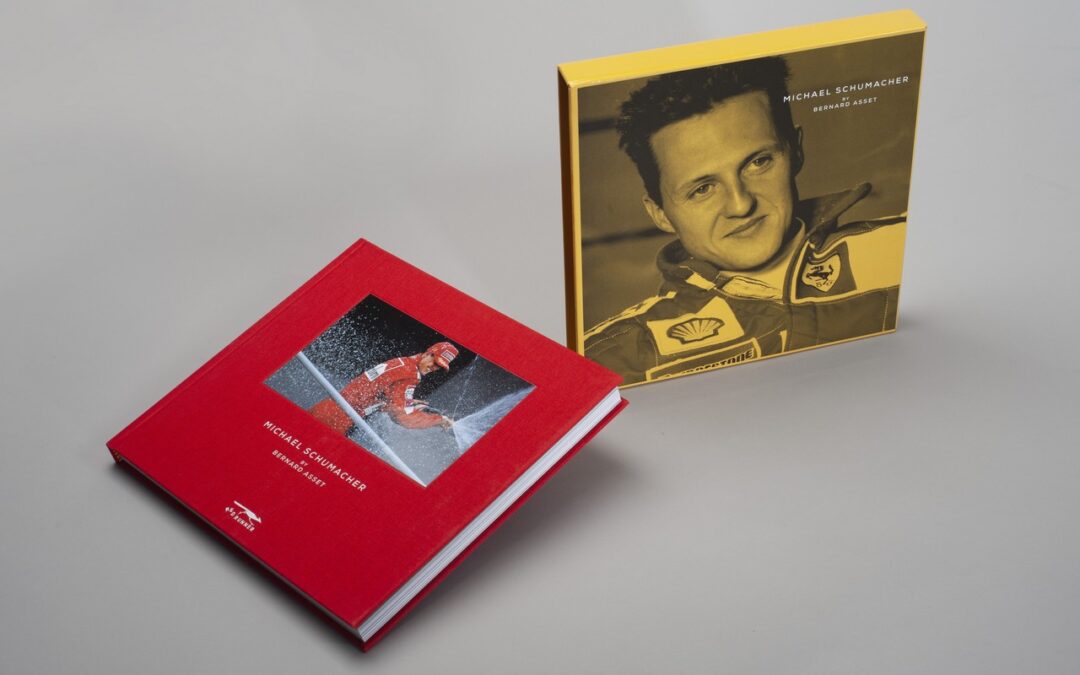
Senna, the legend, the only one! Mentioning his name gives me goose bumps… But then, when Bernard Asset told me he wanted to do the 4th book of his collection about him, I had my doubts… Another book about the legendary Brazilian driver? What hasn’t been done about Senna? I only accepted the challenge because Bernard unveiled some unique pictures, never been seen anywhere. And what about the testimonies? All the people that knew him well had special anecdotes to tell.
So I think we made a very, very special book, and you’ll discover it when you’ll read it. As ever, the book is a limited and numbered edition.
- Unique contact sheet signed by Bernard Asset.
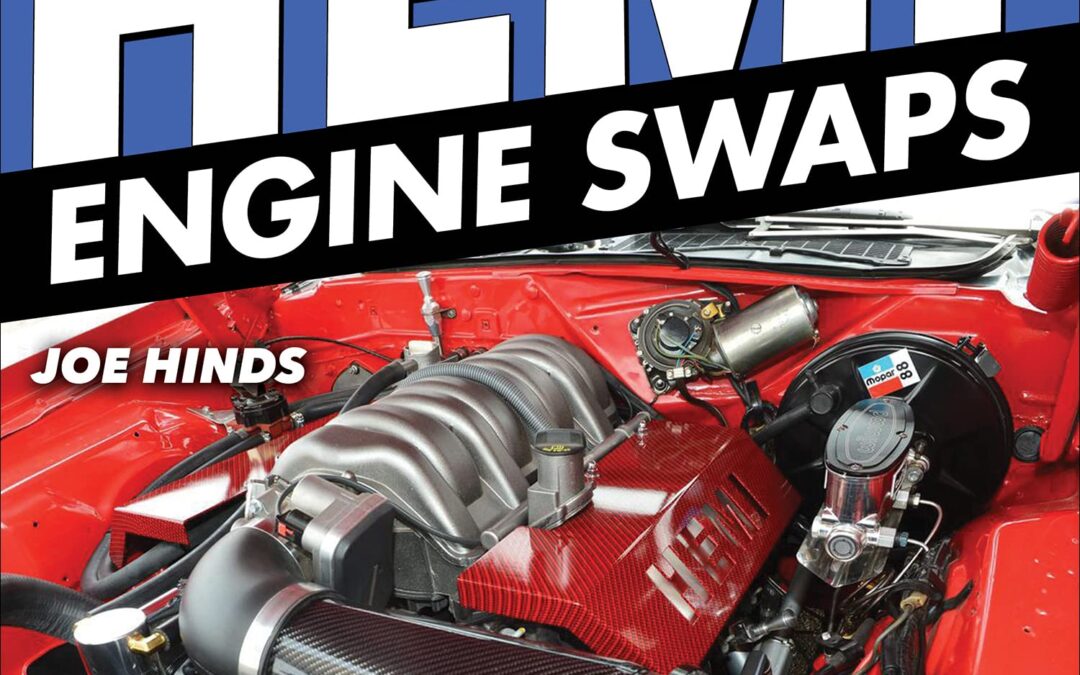
Have you made plans for a new Hemi swap into your classic car? Maybe you’re just curious about the process and want to know how much work is involved. Either way, New Hemi Engine Swaps: How to Swap 5.7L, 6.1L, 6.4L, and Hellcat Engines into Almost Anything has you covered!
Even casual enthusiasts are aware of how many people are swapping modern technology into vintage chassis. Successful LS swaps have been common for more than a decade. They seem to be everywhere among GM enthusiasts.
On the Mopar side, the new Hemi platform is now 20 years old, so plenty of salvage-yard cores are available. With the introduction of the new Hellcat in 2015 (as well as a more robust crate-engine program in recent years directly from Mopar), aftermarket manufacturers have recently seen the wisdom of making peripherals and parts to simplify the process of this swap. Suddenly, swapping a crate Hemi seems as achievable as an LS swap.
In New Hemi Engine Swaps: How to Swap 5.7L, 6.1L, 6.4L, and Hellcat Engines into Almost Anything, expert Joseph Hinds guides you through the process of turning your vintage ride into a modern street machine. The essentials are covered, including engine mounts, transmission cross members, headers that actually fit, and solutions for other common issues. Also covered are fuel-supply items (pumps and tanks) and engine-compatibility concerns (oil filter locations and oil-pan accommodations). Finally, the biggest concerns for most are the wiring, modern power train control modules (PCMs), computer controls, and fuel injection, all of which are covered here as well. There are even step-by-step instructions to fit a modern Hemi into an early-1970s-era Duster as well as a feature about programming aftermarket electronic fuel-injection (EFI) systems.
Now that the degree of difficulty in performing these swaps no longer requires a degree in computer science with welding certifications on the side, many are looking at their vintage Mopars in a new light. Whether you want to do this yourself, farm it out to a professional, or if you are just curious about how it is done, this is the guide for you.

Rebuild your Allison 1000- or 2000-series transmission with this easy-to-follow book that features step-by-step procedures.
Introduced in 1999 by Allison and 2001 by General Motors, the Allison 1000- and 2000-series transmissions have become the most popular heavy-duty transmissions in production today. Used by multiple manufacturers, including GM, Freightliner, International, etc., millions are on roads around the world.
Automatic transmissions are often seen as mysterious and overly complicated, but much of the guesswork has been simplified to its basic elements in this easy-to-follow guide. This book covers the identification process, operation, diagnostic pointers, common failures, and repair and rebuild procedures for the 1000- and 2000-series transmissions. Upgrades to make the 1000 more robust for performance applications are covered as well as the companies that offer upgrades.
This detailed instructional manual is authored by Steve Garrett, a service engineer and instructor for General Motors and a member of the Automatic Transmission Rebuilders Association (ATRA). Quality photos of the rebuild process are featured along with torque specifications and identification of all major and most minor components. If you are looking at performing a rebuild project on your own or you just want to know how your Allison works, this is the book for you.
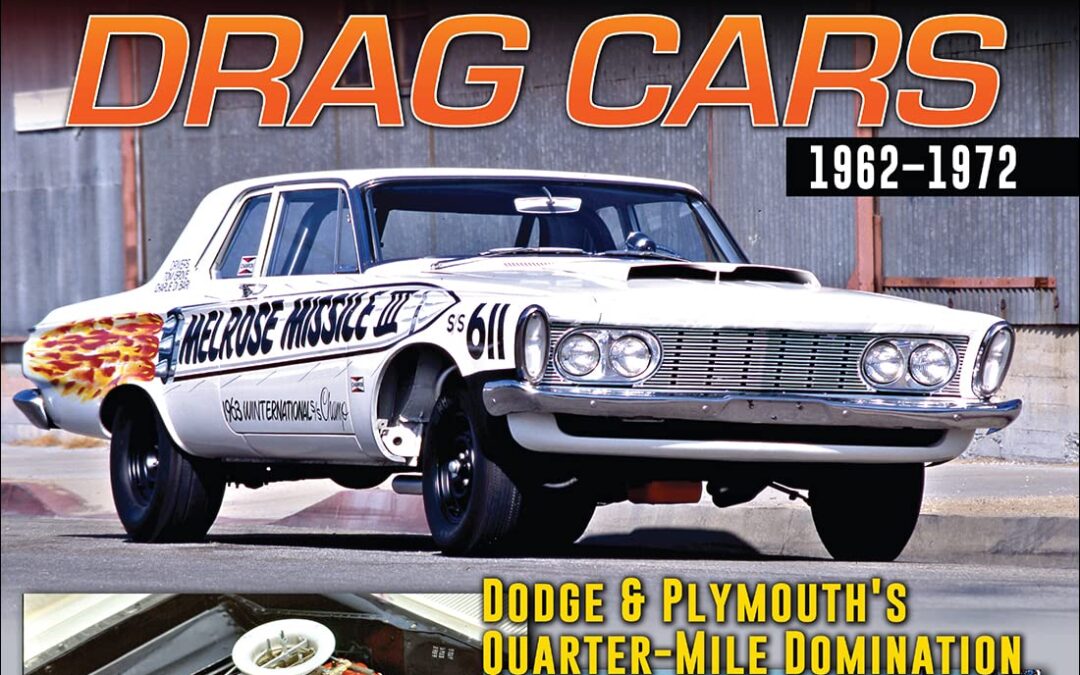
Blast down the quarter mile in your favorite 413 Long Ram, 426 Max Wedge, and 426 Hemi in Mopar Factory Drag Cars: Dodge & Plymouth’s Quarter-Mile Domination 1962–1972!
Stock-based drag racing throughout the 1960s demanded that the cars competing on the track be genuine production models and that they could be purchased by anyone. The strict regulations dictated total commitment from the manufacturers if they were to be successful. No one was more committed than Chrysler.
Chrysler attacked Stock (Super Stock) drag racing in the 1960s with the same fervor as it did the NASCAR Grand National, which itself spawned the reintroduction of the Hemi engine. Its engineers designed and produced a new factory Super Stock turnkey race car most years throughout the decade and enjoyed absolute success on the track, forever cementing its legendary performance status.
The introduction of Pro Stock in 1970 brought with it exciting heads-up racing with the expectation of producing multiple winners from a variety of brands. Instead, it resulted in total Mopar supremacy, as Hemi-powered Chrysler cars won 12 of the 15 national races throughout the first two years, prompting the NHRA to introduce weight breaks to scupper the Chrysler domination. The new 1972 regulations favored small-block-powered compact cars and were the first major step toward Pro Stock spiraling away from its roots and into the tube-frame silhouette formula seen today.
Racing historian Steve Holmes delves into this fascinating period, capturing the careers of the Ramchargers, Melrose Missile, Bud Faubel, Dick Landy, Sox & Martin, Herb McCandless, Don Grotheer, Motown Missile, and countless others, providing a blow-by-blow account of Chrysler’s factory drag car programs and the incredible cars it produced to trounce its rivals during the most epic era in Stock drag racing history.
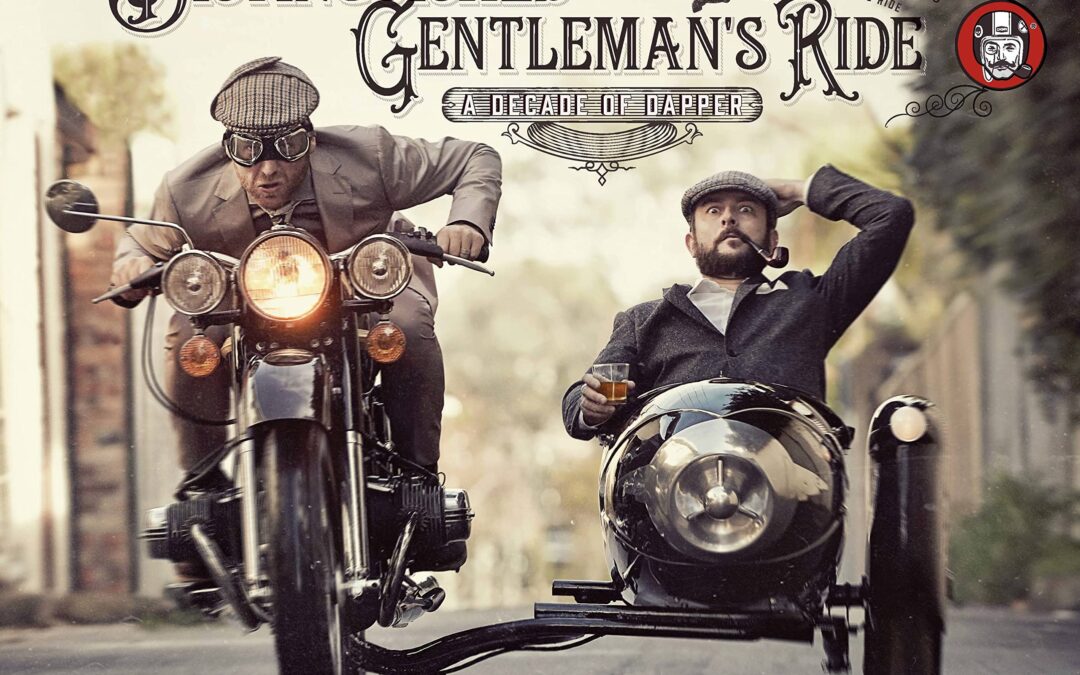
The Distinguished Gentleman’s Ride: Decade of Dapper documents and celebrates 10 years of raising funds and awareness for men’s health initiatives with engaging stories and gorgeous photography. Starting from the simple, joyous act of riding a motorcycle, The Distinguished Gentleman’s Ride (DGR) has united hundreds of thousands of smartly dressed gentlefolk around the world on classic and vintage-style motorcycles to raise
over $35 million for prostate cancer and men’s mental health initiatives. The annual event has attracted the world’s attention and created some truly amazing stories (and thousands of great images) along the way.
The success of the DGR has seen it become so much more than just a charity event. It’s now a kind of global moto family that’s made up of thousands of incredible stories, characters, cities, and ambassadors that are all wrapped up in a kind of motorcycling fashion renaissance. It’s as much about the amazing people that make it happen as it is about the bikes.
The Distinguished Gentleman’s Ride is filled with:
- Engaging stories about the riders and what motivates them
- Dapper fashion and stunning images from dozens of celebrated moto photographers in some of the world’s most iconic locations
- Personal contributions from the likes of actor and TV presenter Charley Boorman, MotoGP world champion Freddy Spencer, and actor Jai Courtney
As a lasting record of the hundreds of stories of triumph and heartbreak from the DGR family, this book brings to life the positive, global impact that motorcyclists have made on men’s health.
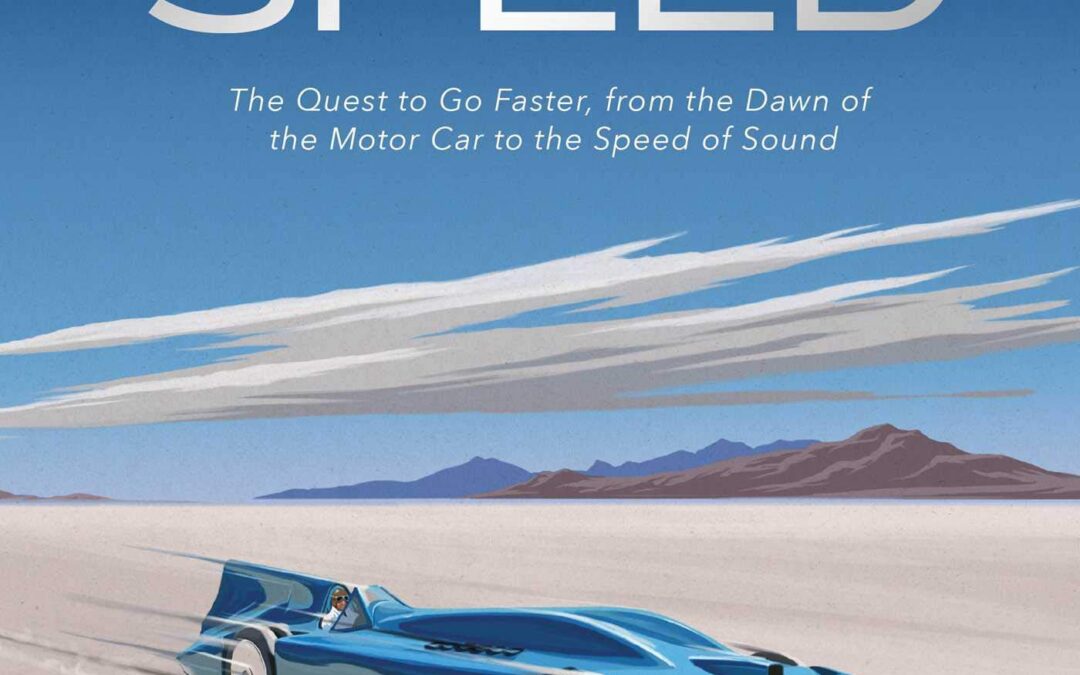
‘A special treat…The pictures and stories combine to provide a rich texture to telling the difficult story of why we chase speed like an addiction.’ Valerie Thompson, the world’s fastest female motorcycle racer
Ever since we built machines that could transport us, there has been a desire to find ways to make them go faster. For some, going faster isn’t enough – they want to be the fastest. This book celebrates those who have built the machines and driven them at ever greater speeds. This is The History of Speed.
Bestselling automotive writer Martin Roach tells the extraordinary story of those who have come to be obsessed by speed. From Camille Jenatzy, ‘the Red Devil’, who became the first man to drive at over 100kmh in 1899, through the golden age of Malcolm Campbell and his Bluebird, and on to the modern era of jet- and rocket-propelled cars, we have gone faster and faster. But this book is not just about these record-breakers, Roach also looks at the technology, the engines and the inventors who helped progress in speed at all levels, from Formula One to the supercars from the likes of Ferrari and Mercedes that are eagerly snapped up by collectors, rarely to be seen on the road.
Accompanied by some of the most stunning images of the cars and those who made and drove them, Roach tells a wonderful story of innovation and invention. He talks to some of the great drivers to find out what inspires them to risk their lives, and finds out from engineers how they developed their ideas. Along the way, we hear some remarkable tales and anecdotes, but also find out how the pursuit of speed can also have its costs, with many tragic heroes and heroines falling along the way.
If you’ve ever thrilled to the roar of a sports car engine, or loved the feel of the g-force as you accelerate away, or even looked on in wonder at a powerful engine, The History of Speed is a book that you will not want to miss out on.

After 92 years of designing, manufacturing and operating their own blimps, The Goodyear Tire & Rubber Company will move to an all new airship, the Zeppelin NT. Follow one of the last blimps as she makes her final flights into retirement, and ultimately history. You’ll see what it takes to operate the blimp, see views from vantage points no one has ever seen before, and get a glimpse of what it’s like to be a crew member working for one of the most recognizable American icons. Watch the blimp perform its last working flights right up until its final flight including deflation and dismantling. You’ll laugh. You’ll cry. You’ll see a side of the blimp no one has ever seen before.
Includes a piece of the last blimp.

After 92 years of designing, manufacturing and operating their own blimps, The Goodyear Tire & Rubber Company will move to an all new airship, the Zeppelin NT. Follow one of the last blimps as she makes her final flights into retirement, and ultimately history. You’ll see what it takes to operate the blimp, see views from vantage points no one has ever seen before, and get a glimpse of what it’s like to be a crew member working for one of the most recognizable American icons. Watch the blimp perform its last working flights right up until its final flight including deflation and dismantling. You’ll laugh. You’ll cry. You’ll see a side of the blimp no one has ever seen before. Filmed in 4K UltraHD, presented here on Blu-Ray for the first time.
Includes a piece of the last blimp.
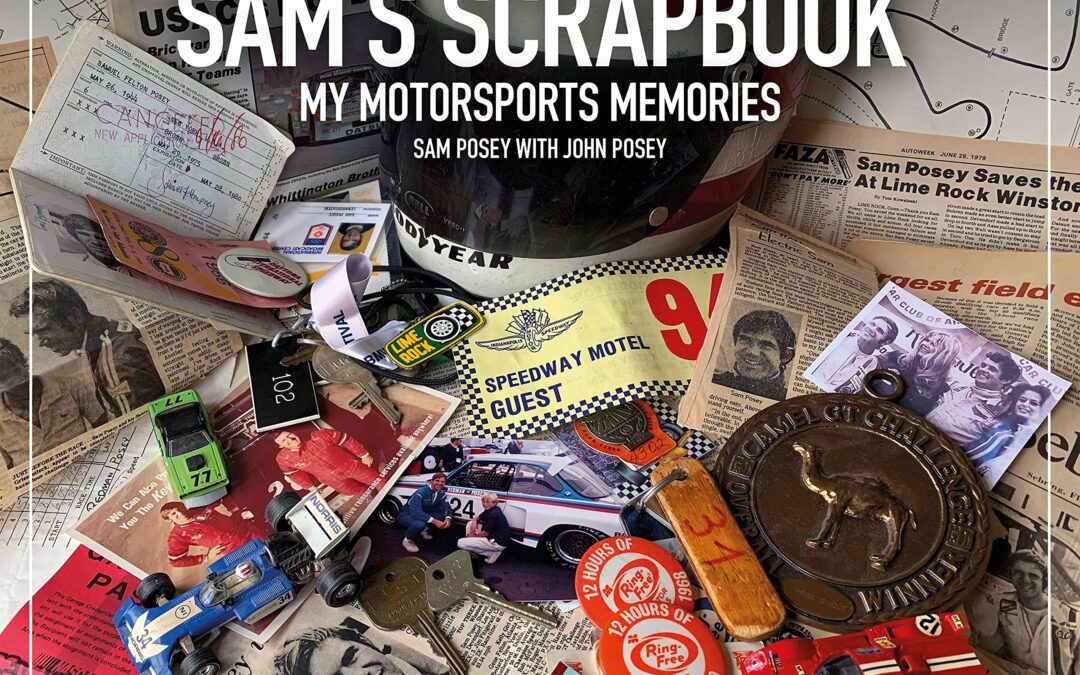
Sam Posey raced a huge variety of sports cars, saloons and open-wheel machines in numerous racing arenas — Can-Am, USRRC, Trans-Am, IMSA, Indy, NASCAR, Formula 5000 and Formula 1 — against rivals and friends such as George Follmer, Parnelli Jones, Mark Donohue, Peter Revson, Dan Gurney, David Hobbs and Brian Redman. Sam’s Scrapbook gives a first-hand account of a romantic era in racing, through pictures no one has seen and stories no one has heard. Running alongside the images, Posey’s commentary is fascinating and thoughtful, and in turns both amusing and emotional.
- Sam’s early days: racing around his mother’s house on a farm in Connecticut against his friend John Whitman.
- The start of his career: driving at Lime Rock, his local track, under the mentorship of John Fitch; a ride as the then-youngest American at Le Mans, with a Bizzarrini in 1966.
- Can-Am: racing against John Surtees, Bruce McLaren and Jim Hall in this famous “anything goes” sports car championship with a car he and Ray Caldwell designed and built.
- Trans-Am: competing in this spectacular saloon series during its golden age, first for Roger Penske and then as a factory driver for Dodge, against George Follmer, Parnelli Jones and Swede Savage.
- Later years at Le Mans: finishing third overall in a Ferrari 512 M with the North American Racing Team (NART) team in 1971; driving the first BMW 3.0 CSL ‘Art Car’ in 1975, featuring a paint scheme by American sculptor Alexander Calder.
- Open-wheel racing: a duel with Dan Gurney in the USAC Championship, finishing fifth at Indy in 1972; two drives for John Surtees in Formula 1; battling his friend and rival David Hobbs on the track and off in Formula 5000.
- Even more variety: three years of off-road adventures in the Baja 1000; rides with the BMW factory team at Sebring and Daytona; and his late career in the IMSA championship with actor Paul Newman and Brian Redman.
This is an unusual and engaging memoir by one of America’s best-loved racing heroes and will appeal to all motorsports enthusiasts.
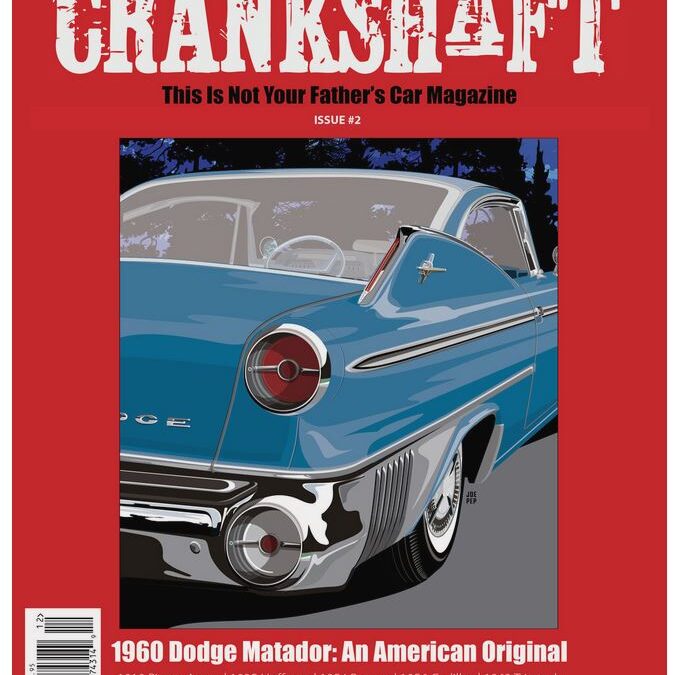
If you appreciate the practicality of Four-Door Sedans and Station Wagons, the workmanship of a Full Classic, the functionality of a Business Coupe, and the performance of Sports Cars and Muscle Cars, then you’ll appreciate Crankshaft, the new collector-car magazine you’ve been waiting for.
Rarely has a 1960 Dodge Matador ever been featured in a magazine, but now you can read all about this rarely seen Mopar. There are also profiles on a racy 1910 Pierce-Arrow, a one-of-one 1935 Hoffman, an all-original 1956 Cadillac, a Corvette-powered Iso Rivolta, Sox & Martin’s 1968 Super Stock Barracuda, a beautiful 1973 Chevrolet Monte Carlo, a finely restored 1967 Saab Sonett II, and a look at General Motors’ “clamshell” station wagons. In addition, we look back at Southern California’s Lions Drag Strip, go into the production room of Brooklin Models, profile a one-owner Triumph TR3B, have an historical review of Lincoln’s 100 year history, and take a rare look at early Motor Shows and Salons of Europe.

Dave Wolin’s new book, “Showroom Stock” hits all the buttons, covering some little known but important segments of auto racing history, forgotten or ignored by the sanctioning bodies. The introduction by Bill King, former marketing guy at SCCA, points the way.
“Showroom Stock” begins with early road racing history, when everything was showroom stock, and proceeds through the evolution of showroom stock club racing and the birth of showroom stock endurance racing at the Nelson Ledges circuit in Northeast Ohio, the “Longest Day”‘. The “Longest Day” events, promoted by “Road & Track” and “Car and Driver” magazines, produced interest by auto manufacturers and tire companies, creating SCCA Pro Endurance Racing, the SCCA Playboy and Escort Series and IMSA’s Firehawk Series, Helping to fuel the interest was the Volkswagen Bilstein Cup, Renault Cup, Coors Racetruck Challenge and Corvette Challenge, all now gone and practically invisible.
Compiler in Chief Wolin (he says he’s not an author) has collected comments stories and quotes from drivers, team owners, crew and press (sometimes they were all the same person), along with some never before seen photos and insider information (who had trick tires, how did you tweak the boost etc.) into a fun read that will be enjoyed by anyone who watched, raced or wished they had attended any of these events.
Wolin, incidentally, was one of the prime movers in the creation of pro showroom stock racing and ran the successful Mitsubishi racing efforts back in the day.
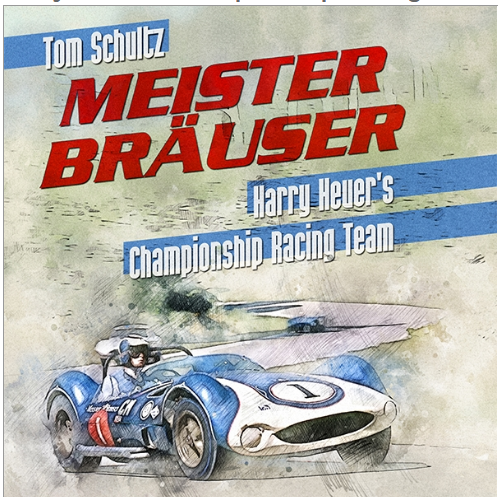
In early 1959, young Harry Heuer, Executive Vice President of the Peter Hand Brewery, Chicago, Illinois, caught the racing bug. He immediately bought a race car and entered it in the May 1959 Meadowdale USAC professional race. At the same time, Reventlow Automobiles Inc., builder and racer of the Scarab, put both of its 1958 race-winning Scarabs up for sale. Heuer bought one, hired Augie Pabst to drive it, and an unprecedented run of wins and championships resulted.
An unforeseen chain of events later in 1959 resulted in the newly-formed Meister Bräuser Racing Team purchasing the second of the two Scarabs, which meant that Heuer had what were arguably the two best sports racing cars in the country united in one team. The results were immediate. A championship in 1959, and a streak of race wins throughout 1960 that earned a second championship. Over the next three seasons three more championships were garnered.
Besides its on-track successes, Meister Bräuser was a leader in promoting team identity. It was one of the first to utilize an enclosed tractor trailer rig to, not only transport the cars, but also to be a rolling at-track machine shop. They owned a small pit tractor to tow the cars around the paddock and had support passenger vehicles available for the crew. All the vehicles were painted in the team colors of dark metallic blue trimmed with white and accented by red pin stripes. The team members were outfitted in matching uniforms and were often flown to the races rather than left to drive cross-country.
The Team ran for only five years, but in that time set a mark for professionalism, wins and championships. They raced hard and played hard. This book recounts the history of the team with their triumphs and their failures. We think that you will find it enjoyable reading, and a valuable look into American racing in the early 1960s
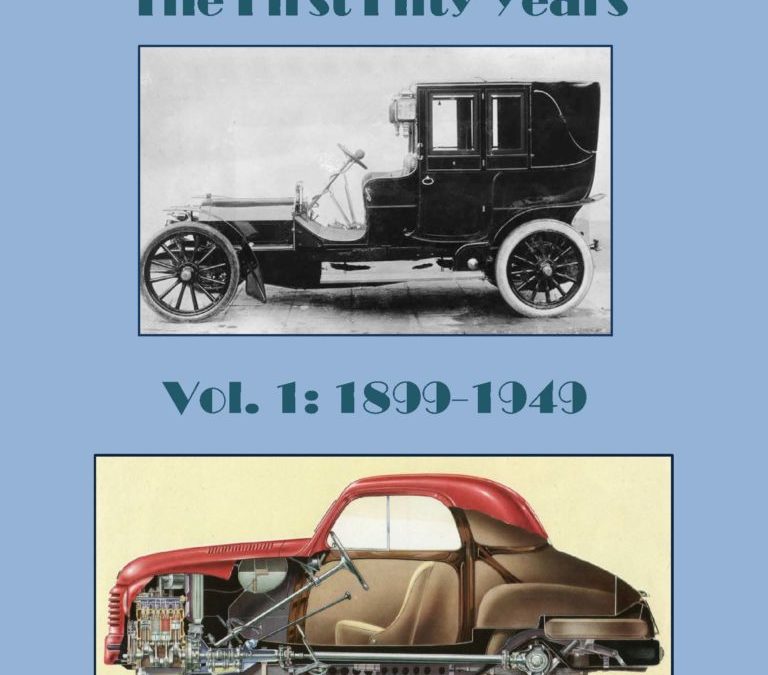
This new book traces the history of the FIAT (Fabbrica Italiana Automobili Torino) company from foundation in 1899, when a group of well-to-do young men decided to found one of the first Italian motorcar manufacturers in Turin, having watched imported French cars putter around and realising their country had no equivalent industry. One of the founders, Giovanni Agnelli, addressed a meeting of fellow-founders on 11th July 1899 thus: “We cannot waste any time. You should have seen what I saw the other day on my trip to Nice. Hannibal is at the gates. In France, even the public sector is starting to use the motorcar.”
Fiat today is a pre-eminent European motor manufacturer producing a wide range of cars to suit every need and budget, cars always cleverly engineered and elegantly styled.
This is volume 1 of 2, a historical survey of 100 years of Fiat cars. The first book covers a fifty year period from 1899-1949, which witnessed the creation of the Fiat businesses and the creation of many innovatively engineered popular cars and trucks as well as aircraft which saw action during two wars.
Competition successes were legion during the period. Fiat attracted brilliant engineers and talented managers, many of whom became legendary names in the annals of motoring history. Without their creative genius, knowledge and skills the company might not have gotten where it is today- bumpy thought the road has been many a time.

Ford’s full-size model change from 1959 to 1960 was seen as a big departure from the swerving lines of the 1950s. Slow to start on sales, Ford’s full-size production grew year after year, peaking with 648,010 units produced in 1963. It was an all-time best for the Galaxie line and its sister nameplates. Eight appearance and performance offerings were applied to the full-size Ford line including the Fairlane, Galaxie, Ranch Wagon, Country Sedan, Country Squire, Courier, 300, and Custom, which made each car unique.
With more than 2.3 million full-size Fords produced from 1960 to 1964, a restoration book for these cars has been desperately needed, and here it is! Author Colin Kleer, president of Pennsylvania’s Three Rivers chapter of the Galaxie Club puts his decades of experience restoring these cars into this single volume. Featuring step-by-step procedures on body, driveline, chassis, and interior components, Kleer shows, with more than 400 photos and text, how to restore a full-size Ford to its former glory. Crucial projects such as rust repair and driveline maintenance help guarantee that your Ford will be sound and solid for years to come after the restoration.
The Galaxie and its full-size stablemates continue to be a strong force at car shows and in the marketplace; they create an even deeper following for these cars. Adding a detailed restoration book to the full-size restorer’s arsenal will surely aid in bringing more of these Fords back to life and back on the road.



